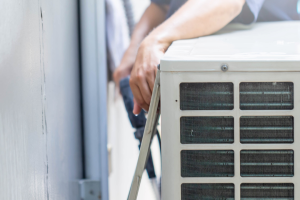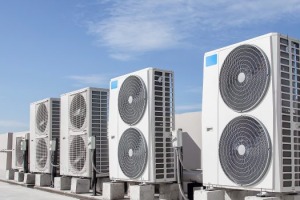


News I published 15 April 2022
DIY versus DIFM
More than eight years of continuous research on the European home improvement market has provided us detailed insights on how overarching trends, for instance the ageing of the European population, influence DIY behaviour. Meanwhile, we have gathered substantial knowledge on the influence of sudden disruptive events like a pandemic on consumers’ home improvement jobs.
One topic that beautifully illustrates the interplay of both trends and events is the tension between Do It Yourself (DIY) and Do It For Me (DIFM), between consumers performing home improvement jobs themselves and the ones outsourcing these jobs to other parties. Knowledge of consumers’ DIY behaviour is essential for the success of strategies of manufacturers and brands of home improvement products.
That is why DIY vs DIFM is a recurring theme of USP Marketing Consultancy’s European Home Improvement Monitor, and the focus of the Q4 2021 report, for which we interviewed 6.800 consumers from 11 countries on how they do or get their home improvement jobs done.
The trend toward more DIY is persisting
In the first years of our research, from 2013 until 2018, we saw a slow but steady trend from DIY to DIFM. Year by year, the share of consumers doing the home improvement jobs themselves declined, while the share of outsourced home improvement jobs grew. The main reasons for this trend toward more DIFM are related to generational changes and differences.
On the one hand, the European population is ageing and consumers who were used to doing home improvement jobs themselves may be less inclined to climb the stairs and pick up the hammer as they get older. Meanwhile, younger generations of consumers seemed less interested and less skilled than the older generation. Add the two together and the result is fewer home improvement jobs done by themselves and more outsourcing.
As the above graph shows, the trend towards more DIFM has turned around somewhere after 2018. From 2019 onwards, the share of DIFM jobs has gradually declined while DIY is on the rise. Our most recent measurements show that this trend persisted in 2021 as well. The question is: why this turnaround?
Labour and pandemic
In recent years, we have seen labour shortages increase in the construction and installation sectors in many European countries. Increasing labour shortages make it harder to find a professional to outsource home improvement jobs to and drive up the costs of that labour as well. As a result, more consumers choose to do the jobs themselves, which is visible in the above graph from 2018 onwards.
Aside from the effect of trends like gradually increasing labour shortages and costs, the sudden effect of the pandemic and resulting lockdowns has rocked the boat of home improvement and influenced DIY shares in several ways. As the pandemic raged, people were reluctant to receive professionals into their house, which led many to cancel or postpone larger home improvement jobs that needed the involvement of a professional.
Meanwhile, due to lockdowns, people spent more time at home and could allocate budget that would otherwise be spent in restaurants or on holidays to home improvement. This led to an increase of home improvement jobs in general. Since people had more time on their hands that would otherwise be spent on commuting to work, for instance, they more often picked up the paintbrush or hammer themselves, resulting in more DIY as opposed to DIFM.
Will this trend last?
The above shows how the interplay between overarching trends and sudden disruptive events influence the home improvement market by disturbing the balance between DIY and DIFM. The question remains whether DIY shares will continue to increase.
The unpredictability of sudden events like the pandemic can make it hard to predict whether this will be the case. However, over two years of pandemic, many unexperienced people attempted DIY and saw that DIY is doable even without much experience. With that in mind and some DIY experience gained, the choice to keep doing home improvement jobs yourself is an easy one. Meanwhile, trends like increasing labour shortages and costs will keep pushing people towards the DIY side as well.
Of course, the severity of labour shortages differs per area, as do demographics. For manufacturers and brands of home improvement products, attention to local details is important when developing strategies for their specific areas of operation. For details of consumers’ DIY behaviour in 11 European countries, we refer you to the Q4 2021 report of USP Marketing Consultancy’s European Home Improvement Monitor.

Read more about the subject


26 March 2024 I Ralitsa Ruseva
What are the best topics for training according to HVAC installers in Europe?


15 March 2024 I Maja Markovic
Who is the biggest challenger of the European electrical installation wholesale?


07 March 2024 I Reinier Zuydgeest
Do-it-for-me becoming more popular in the European home improvement market


26 February 2024 I Jeroen de Gruijl
BIM usage European level

Fresh Insights Await
Our latest reports
Delve into the newest findings across various market segments, crafted for a cutting-edge overview. Explore our latest reports, brimming with up-to-date data, trend analyses, and in-depth examinations, all tailored to provide you with a comprehensive understanding of the current market dynamics.
Construction
Home Improvement
Installation
Construction
BIM Q4 2023
2024 246 pages
Key insights regarding the BIM usage and behaviour of European architects, and our latest future building volumes prognoses
1,850 Euro
Construction
Purchase Channels H2 2023
2024 123
Explore the buying and ordering behaviour among contractors in H1 2023. Uncover the key channels used, share-of-wallet and much more.
6,300 Euro
Construction
Behavioural segmentation and media usage report 2023
2023 75 pages
This report provides a comprehensive overview of purchase behaviour, products, and media usage, specifically focusing on European handymen. It delves into how handymen use media, and for what purposes, and examines their habits and preferences in terms of purchasing behaviour.
8,400 Euro
Construction
Purchase behaviour 2023
2023 64 pages
Uncover the purchasing behaviors among painters in 2023. Understand the factors driving their choices and how they relate to product and brand preferences.
10,500 Euro
Construction
Sustainability Q2 2023
2023 94 pages
Uncover architects' perspectives on sustainability in Q2 2023. Explore the evolving sustainable practices and the impact on architectural designs and project implementations.
1,850 Euro
Construction
Media orientation Q1 2023
2023 95 pages
Unravel the media engagement trends among European architects in Q1 2023. Delve into how different media channels are utilized for information, inspiration, and professional growth.
1,850 Euro
Home Improvement
DIY or DIFM Q4 2023
2024 70
Explore the prevailing trends between DIY and DIFM in Q4 2023. Understand consumer preferences and the factors influencing their choice between DIY and DIFM.
3,150 Euro
Home Improvement
Branding Q3 2023
2023 93 pages
This report offers an extensive overview of the home improvement industry, with a focus on branding and the most popular brands within different categories. Within this report, you will gain insights into how customers perceive home improvement brands and what motivates them to buy certain products.
3,150 Euro
Home Improvement
Purchase channels Q2 2023
2023 114 pages
The European Home Improvement Monitor offers valuable insights on purchase channels in the European home improvement industry, examining the evolving preferences and behaviors of consumers across traditional retail and emerging online platforms.
3,150 Euros
Home Improvement
Rise of digital natives Q1 2022
2022 120 pages
Explore the impact of digital natives on the home improvement sector in Q1 2022. Discover how digitalization is shaping consumer behaviors and market trends.
3,150 Euro
Home Improvement
Purchase Channels Q2 2022
2022 124 pages
Uncover the prevalent purchase channels in the home improvement sector during Q2 2022. Delve into consumer preferences and the factors influencing their purchasing decisions.
3,150 Euro
Home Improvement
Do-it-yourself or do-it-for-me Q4 2022
2022 93 pages
Explore the prevailing trends between DIY and DIFM in Q4 2022. Understand consumer preferences and the factors influencing their choice between DIY and DIFM.
3,150 Euro
Installation
European Heat Pump Monitor: Homeowners’ insight
2024
The European Heat Pump Monitor: Homeowners’ insight is an annual survey based on about 4.000 online interviews with homeowners, conducted in 8 European countries. The report covers a range of topics, relevant to understand the sentiments, buying behaviours, concerns, and evolving needs of the target group. It includes 8 country-specific insights, with cross-country comparisons, and provide guidance for shaping successful and sustainable strategies for business growth.
5,900 Euro
Installation
European Heat Pump Monitor: Heat pump installers’ insight
2024
The European Heat Pump Monitor: Heat pump installers’ insight is an annual survey based on 920 phone interviews with heat pump installers, conducted in 8 European countries. The report covers a range of topics, relevant to understand the sentiments, buying behaviours, concerns, and evolving needs of the target group. It includes 8 country-specific insights, with cross-country comparisons, and provide guidance for shaping successful and sustainable strategies for business growth.
9,800 Euro
Installation
Training needs Q4 2023
2024 110 Pages
This report explores the training needs of installers, both digital and personal. The full report covers all important training needs & aspects and offers a comprehensive overview of business development in the installation sector across important European countries.
2,650 Euro
Installation
Purchase channels Q4 2023
2024 97 pages
This report offers a comprehensive view of the buying and ordering behaviour among electrical installers in Europe. Within the report, you will find key information on the purchase channels installers use, the share-of-wallet per channel, the way of ordering and much more.
3,150 Euro
Installation
Services in the Installation market Q2 2023
2023 111 pages
This report explores the type of support installers anticipate from manufacturers and to what degree. Alongside a thorough examination of installation services, the report presents a comprehensive overview of business development in the installation sector across important European countries.
2,650 Euro
Installation
Sustainability Q1 2023
2023 99 pages
The European Mechanical Installation Monitor report provides a detailed analysis of the plumbing and HVAC industry. This report specifically focuses on sustainability aspects in the industry.
2,650 Euro








